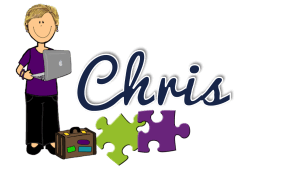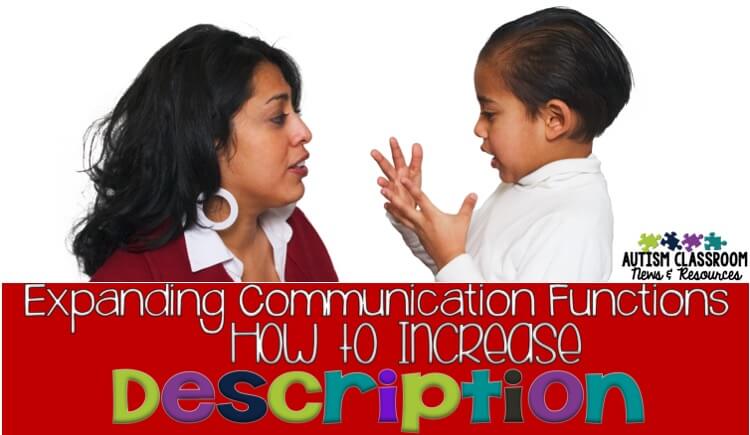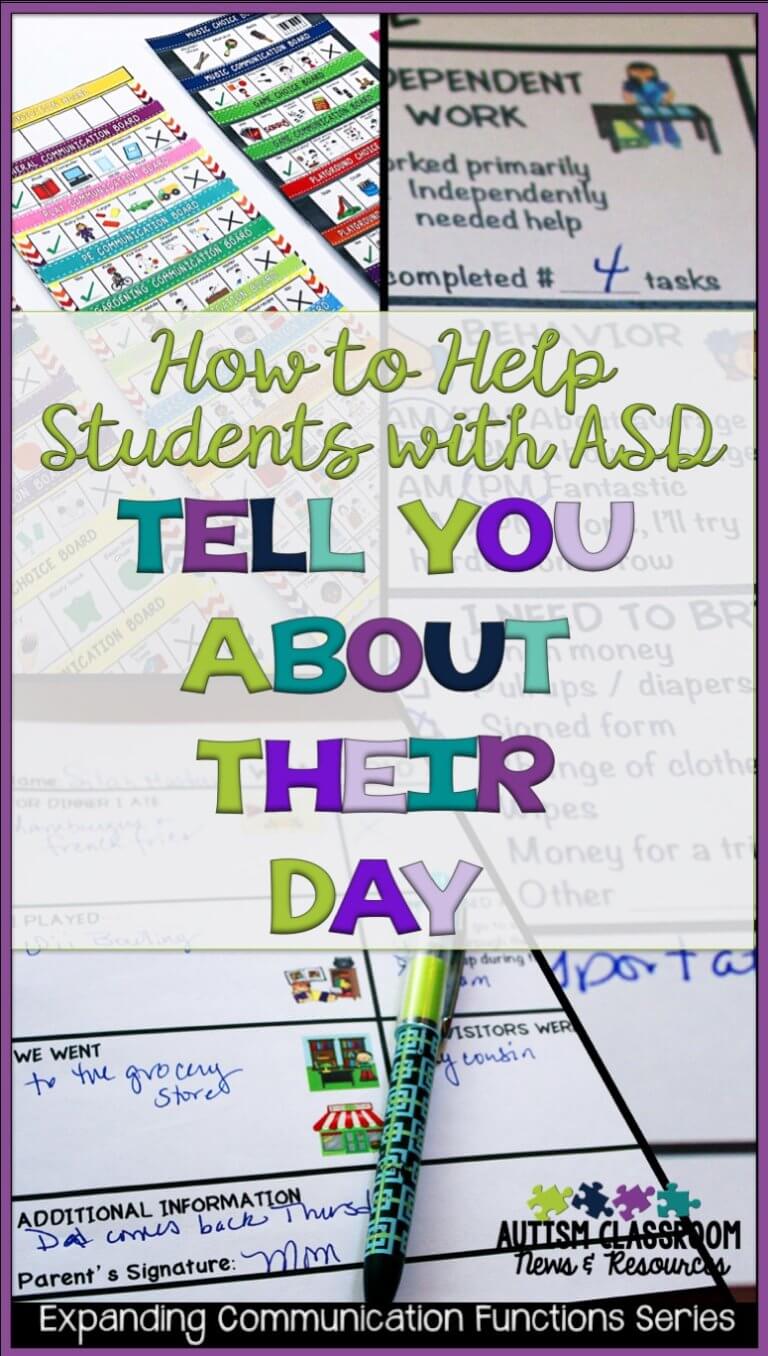Continuing in our discussion of increasing communicative functions, today I want to talk about how to increase description use by your students. Describing words are ones we often work on receptively but are harder to get the students to use them in a meaningful way expressively. They typically include labeling but they include the addition of descriptions like colors, size, speed, placement, etc. Essentially it’s the use of adjectives and adverbs.
 Many times we work with students extensively on receptive identification of these concepts. We work on them identifying items by their features (e.g., two legs, a tail, the tall one), their function (e.g., the one we eat with), or their category (e.g., food, furniture, clothes). It’s important for our students to understand how to find things when we describe them.
Many times we work with students extensively on receptive identification of these concepts. We work on them identifying items by their features (e.g., two legs, a tail, the tall one), their function (e.g., the one we eat with), or their category (e.g., food, furniture, clothes). It’s important for our students to understand how to find things when we describe them.
But it’s equally important for them to be able to describe them as well. Many of our students don’t do that if they can get away with just naming the item. So, we have to find ways to really facilitate practicing with description words to increase the functions of our students’ communication. Here are some ways that you can do that.
Make requests require a descriptive word
Harness the students’ desire for specific items by upping the ante of how they have to communicate for it. If they love yellow jelly beans but not black ones, set out choices of those two. To get the one wanted, the student has to ask for a “yellow jelly bean.” If he just asks for a jelly bean, he gets the black one, that he doesn’t like. So the reinforcement of the request is tied directly to the characteristic he asks for. Have big cookies and little cookies. Who wouldn’t want the big one? Then they have to request “I want the big cookie” or they get the little one. Same thing with small. Essentially you are setting up choices for the student that require him or her to discriminate in his/her request which one he/she wants.
Put things the student requests in different containers
Put items in a big box and a little box. Put 1 candy in a small box and a handful in a big box. To get more he has to ask for the big box. You can use different colored boxes, different sized boxes or even different shaped boxes. This builds the description into the request along with the natural reinforcer for using it. Have the students request things at snack by numbers (I want 5 Cheetos is so much better than 1).
Use sentence strips with cues
I love using sentence strips to expand students’ language. Whether they are using the sentence strip to communicate by exchanging it or as a visual cue to verbally create a sentence. Add spaces and visuals for students to fill in the descriptions about things they are talking about. Have a variety of materials for the students to describe and include sentence strips for them to use to cue them.
Books
Books are perfect tools for having students describe what they see. You can use interactive books or story books of any kind. Have the students describe things they see. If needed include sentence strips to help them talk about what they are reading.
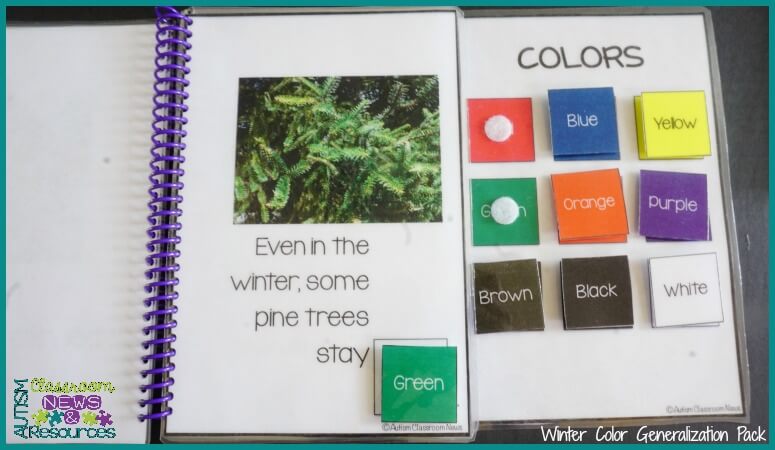
Modeling
Any type of modeling will work, but peer modeling and video modeling can be powerful tools for students to learn how to label and describe items. Having peers buddies reading with students allows them to provide a model of describing pictures from the book. You could also a have a peer make a video of talking about the pictures in the book and use it as a video model. You can do the same thing during play, on the playground or on a walk. Teach the peer to model something like, “I see a green frog” and then wait to see if the student with autism comments similarly.
Use Receptive Language Materials Backwards
Instead of having students complete the file folders like those below, have them describe what they see verbally and complete the task as a reinforcer. Or they can take it apart and tell you how they are related. They can do the same with file folders, interactive books and color-by types of activities.
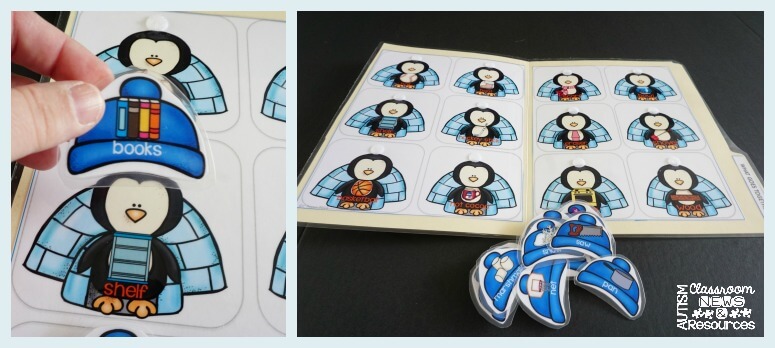
I Spy
The I Spy game is an incredible way to build expressive language with descriptions. To tell you what to look for, the students have to describe what they see, so it’s a perfect match. “I spy something green” or “I spy something green and slimy” is more descriptive than saying I see a frog. It’s a good one to use with peer models as well since the students take turns. You can use books for I Spy, you can play while waiting for something, or you can play with pictures you have created or chosen to have the students describe.
Take Pictures
Students love to take pictures with smart phones and cameras. If you have an old cell phone or camera, have them take a picture, call it up on the screen and describe what they see. You can provide peer models or sentence strips to support it. And if you want to take it to an even more exciting activity, think about using Snapchat filters (not sending the snaps but saving them to the camera). Have the kids describe what they see with the filter.
Picture of the day
Consider adding a picture of the day to your morning meeting or group time. Have each student look at the picture and describe something that he/she sees. Again use sentence supports and modeling can be built in for some students by having students with more advanced language go first.
Magical Mystery Bag
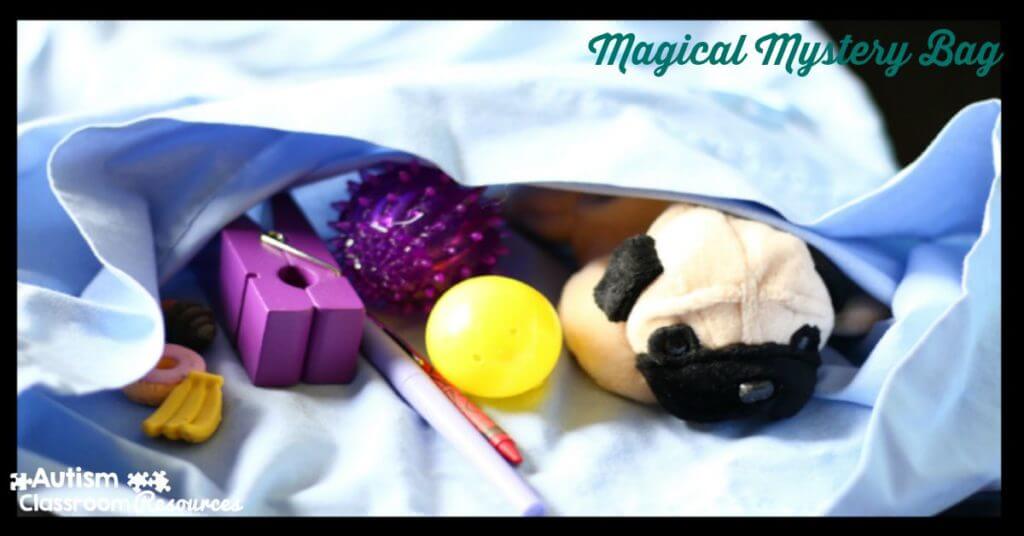 I wrote about using the Magical Mystery Bag (also known as a pillow case full of stuff) for lots of different reasons in this post. It would work well for this as well.
I wrote about using the Magical Mystery Bag (also known as a pillow case full of stuff) for lots of different reasons in this post. It would work well for this as well.
So those are just some of the ideas for creating opportunities for descriptive expressive language. I would love to know how you encourage it with your students! And check out some of the great ideas offered by the participants in Facebook Live!
Facebook Live Session
Until next time,
